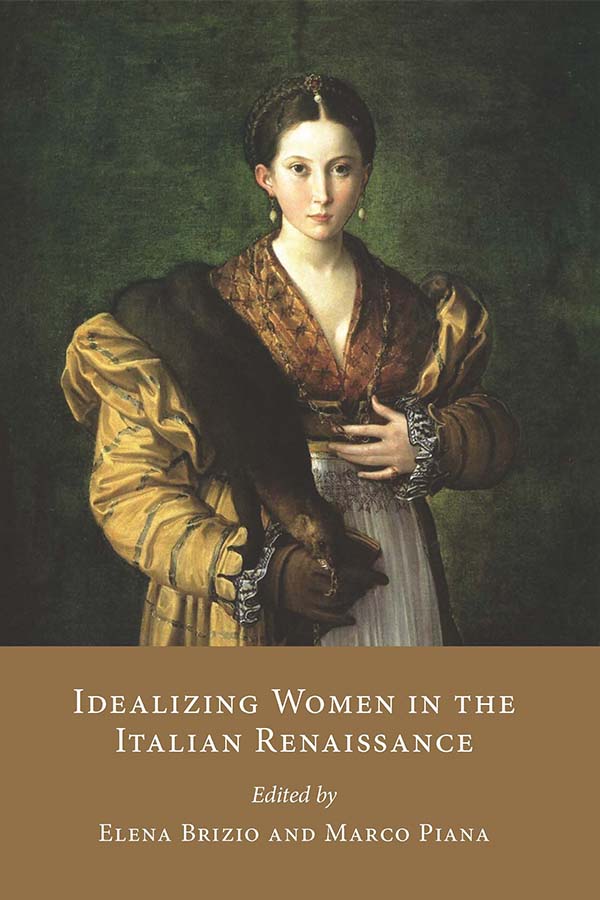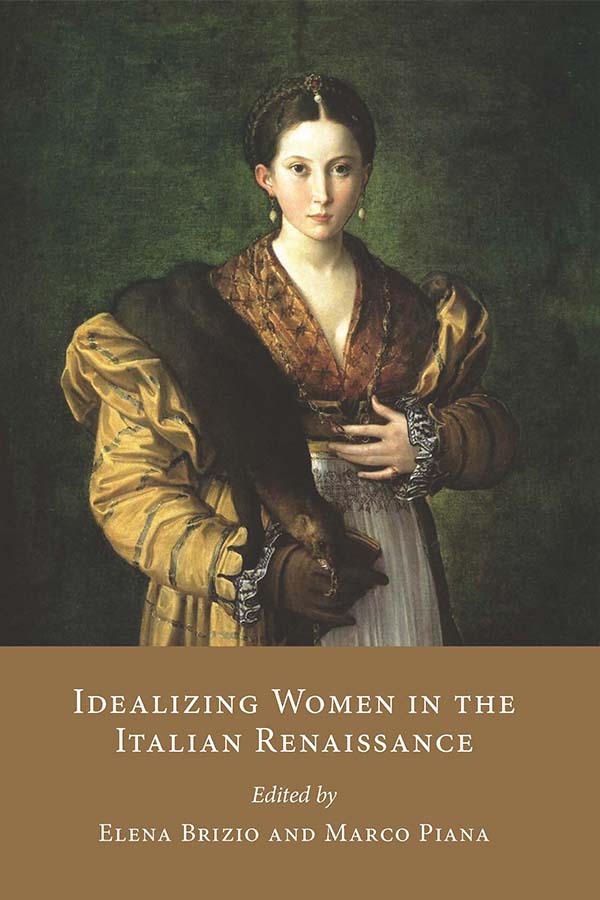Idealizing Women in the Italian Renaissance
Edited by Elena Brizio and Marco Piana - ES55
Overview
Between the fifteenth and seventeenth century, Italy was home to an animated debate on the role of women in society, history, and religion. Contemporary authors, both male and female, appealed to the authority of classical and medieval philosophers in complex and nuanced ways to redefine the idea of womanhood in a changing society. Despite this open and fruitful dialogue, women were still idealized according to a strict model of female virtue based on a culture of honour and chastity that was reflected in the arts as well as in law and daily life. The volume analyses this process of idealization, the rhetorical, philosophical, or historical tools used, and how this vision differed in theory and practice.
Elena Brizio teaches Medieval and Early Modern History at Georgetown University Villa Le Balze in Fiesole. She has published on the political and institutional history of Siena in the fourteenth century and the Consilia of the medieval jurist Bartolo da Sassoferrato. Her current research focuses on the cultural, economic, and social power of Sienese women in the Renaissance.
Marco Piana is a Visiting Assistant Professor in Italian at Smith College. His field of research focuses on the literary representation of otherness, antiquity, and religious identity in Medieval and Early Modern Italy, with particular regard to Savonarola, Gianfrancesco Pico della Mirandola, and penitential spirituality.
305 pp., 28 ill.
ISBN: 978-0-7727-1106-9
Published: 2022
Contents
Elena Brizio and Marco Piana, “Introduction”
- Judith B. Steinhoff, “Mandates for Women’s Mourning in the Early Renaissance: Paintings and the Law in Trecento Siena”
2. Sandra Cardarelli, “A Depiction of Virtue and Beauty: The Patronage of The Saint Ursula Fresco in the Church of San Giorgio at Montemerano”
3. Mathilde Legeay, “Idealizing the Female Hero: Representations of Judith in Seventeenth-Century Italian Painting”
4. Benedetta Lamanna, “A Good Woman, a Good Wife: Strategies of Idealization in Sperone Speroni’s Dialogo della Dignità delle Donne”
5. Francesca D’Alessandro Behr, “Philosophy, Religion, and the Praise of Women in Lucrezia Marinella”
6. Sarah Rolfe Prodan, “Female Exemplarity, Identity, and Devotion in Lucrezia Marinella’s Rime sacre (1603)”
7. Rosalind Kerr, “Idealized Actresses: Rebellious Female Voices”
8. Serena Laiena, “Incarnating the Ideal: Vincenza Armani, the First Diva”
9. Pina Palma, “For his Wife and Lover: Pontano’s De amore coniugali”
10. Laura Giannetti, “Femininity and Food Culture in Cinquecento Italy”
11. Jane Tylus, “Ideal Sister, Ideal Poet: Cassandra and Gaspara Stampa”
Praise
Each essay in this richly interdisciplinary collection explores a specific situation in Renaissance literary or visual arts in which women, as creators or consumers or both, engaged with ideals of femininity. The authors explore the complexity these ideals as they functioned in Renaissance culture, to show how they could be both restrictive and emancipatory for actual women.
– F. Thomas Luongo, Tulane University
This important collection of essays offers new insights into the dynamic relationships between Italian renaissance gender ideals and the lives of contemporary women and men and explores the many ways that both modern scholars and renaissance readers have responded to canonical texts about women.
– Alison Smith, Wagner College
Couldn't load pickup availability


